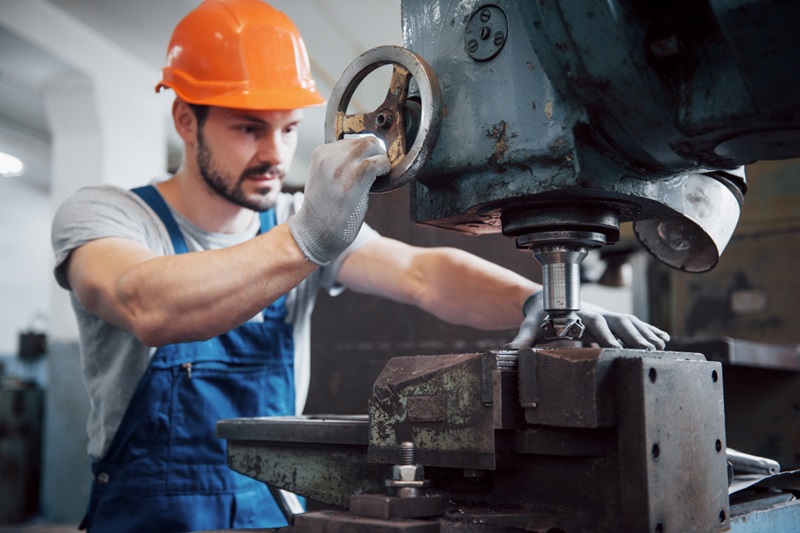Have you ever pondered the critical role of operational continuity in a mine setup? Are you aware of the immense significance and impact of efficient maintenance management in the mining sector? If these questions intrigue you or your operational success hangs by the thread of these solutions, then you are in the right place.
Maintaining operational continuity, which primarily involves adequate service and timely repairs of mining equipment, is quintessential to productive mines. This does not only assure the smooth functioning of these expensive machineries but also greatly reduces the risk of sudden downtime or unforeseen mishaps. This blog today is a comprehensive deep dive into the best practices for maintaining mining equipment, keeping the operations seamless and productivity at its zenith.
We will explore various facets of this concern, such as the criticality of periodic maintenance, the 'why's and 'how's of mining equipment repairs Queensland, the advantages and disadvantages, and the role of proactive planning. So, brace yourself for an engaging and insightful journey into the heart of the mining operations.

The Criticality of Periodic Maintenance:
The importance of routine maintenance cannot be underestimated in a setting as exhaustive and mechanical as mining. Mining equipment, typically designed to endure extreme conditions, is inherently subject to substantial wear and tear. Tackling this concern head-on requires a disciplined approach to regular equipment checks and preventive measures.
Anticipating potential faults and addressing them on time is the key to circumventing extravagant repair costs and downtime. A well-chalked out maintenance schedule, integrated with predictive analytics and diagnostics, can tip the scales in favor of operational efficiency and cost management.
Moreover, as a cog in the wheel of operational continuity, periodic maintenance also guarantees better safety standards. Enhanced equipment lifespan, reduced accident risks, and increased worker confidence all amount to a safer, more reliable operational environment.
The 'Why' and 'How' of Mining Equipment Repair:
So, why is the repair of mining equipment so essential? Equipment malfunction can become a stumbling block in the path of seamless operations, posing serious safety and productivity issues. The objective is to minimize reactive maintenance and instead, adopt a proactive repair regimen.
How do we accomplish this? It boils down to a blend of robust equipment examination methods, predictive maintenance technologies, and well-trained personnel. A purposeful interplay of these critical components can lead to timely identification of repair needs, thereby helping avoid operational distress and potential accidents.
Employ techniques like oil analysis, vibration analysis, thermographic inspections, etc., to identify possible wear and tear. Additionally, investing in skill development and training of maintenance staff can lead to more accurate diagnoses and effective repairs.
The Pros and Cons:
Like any other operational decision, mining equipment repair also comes with its set of advantages and drawbacks. The obvious benefits include extended equipment life, improved equipment reliability, enhanced safety, reduced downtime, optimized productivity, better cost management, and increased operational continuity.
However, the challenges lie in the considerable investment required for predictive maintenance tools and technologies, training of personnel, the complexity of identifying hidden defects, and time constraints in conducting regular checks and repairs within a demanding operational schedule.
Proactive Planning and its Role:
Proactive planning here implies foresight and preparedness – crucial ingredients for a successful preventive maintenance and repair strategy. This involves planning for equipment replacements, regular preventive maintenance routines, investing in technologies, and ongoing staff training.
Such a strategy also includes budgeting for repair costs, machinery updates, and allocating resources for potential emergencies. Not only does this preparedness mitigate disruption in operations, but it also proves financially viable in the long run by curtailing unexpected repair expenses and operational losses.
The Role of Technological Innovations:
In the present-day scenario, technology has paved the way for advancements in maintenance management. Leveraging technologies like the Internet of Things (IoT), robotics, machine learning, and data analytics can revolutionize equipment management in mining.
These technologies enable predictive diagnostics, failure prediction, optimized maintenance schedules, and remote troubleshooting, significantly reducing the frequency and impact of machine breakdowns. Thus, technological innovations have a profound influence on the way we approach mining equipment repairs and maintenance.

Conclusion:
In the grand scheme of mining operations, maintaining operational continuity is a significant concern. To that end, mining equipment repairs and maintenance holds the key. While there are inevitable challenges and investments involved, adopting a proactive approach toward regular checks and repairs is undoubtedly beneficial in the long run.
The investments made toward employee training, predictive maintenance tools, and robust examination methods pay back manifold in terms of improved machine reliability, reduced downtime, and enhanced safety. More importantly, it assures a smooth workflow, thereby maximizing productivity and ensuring the profitability of mining operations. Amid all these, technology emerges as a powerful ally, facilitating a more systematic and efficient monitoring mechanism in the realm of mining equipment maintenance and repair.
Embracing this preventive, rather than a corrective approach, is a critical factor in driving the future success and sustainability of mining operations worldwide.
For more information about us, please refer to the details below:
Business Name: Biddeston Engineering
Address: 984 Oakey Biddeston Rd, Biddeston QLD 4401, Australia
Tel: 0400 395 548






No comments:
Post a Comment